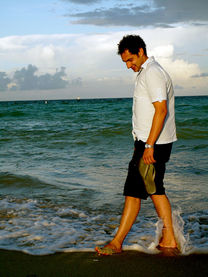
A recent IBM survey finds that creativity is the most important quality for success in business. The survey consisted of 1,500 one-to-one interviews with CEOs and organisational leaders across 60 countries.
You might say this is no surprise. In The Future of Management, Gary Hamel sets out that the greatest challenges organisations face today are around adaptation, engagement and innovation. Of course we must be creative.
The thing is, when creativity is so critical to business, why does it still feel so difficult to manage? It seems that many organisations understand why they need to be creative, but there is a big gap in understanding the how.
Model to inspire organisational creativity
To address this, it’s helpful to draw learning from fields where creativity is abundant – fields such as design, media, art and even gaming. This approach is something I’ve been looking at closely, leading to a simple model to inspire organisational creativity.
The model is based on five aptitudes – or ‘strands’. Think of them as intertwined areas of creative expertise, each contributing to the creativity of the whole:
Visioning is about presenting visions, strategies, opportunities, challenges and developments in more engaging and inspiring ways. This is about going beyond presentation slides and handbooks. It’s about compelling people to engage, to dream, to enquire, to discuss, and to act with purpose.
Imagination is about understanding how ideas happen; constantly seeking new sources of inspiration; finding free space and tools for cultivating ideas and exploring opportunities.
Play is about making space for trial and error: for experimentation, simulation, modelling and improvisation. Play is about setting up game-like scenarios and projects to tackle aims and challenges with more vigour, excitement and meaning. Play will feel like fun… this can be an effect as well as a cause.
Symphony is about bringing people together across an organisation (and beyond) and sharing continuous dialogue, ideas and possibilities. It’s about playing the role of conductor – transferring information, ideas and knowledge and helping others to help each other.
Aura is about developing a unique style and ensuring that all components through change have this, making the sum of the parts greater than the whole. (To understand this, think about how a great work of art, from film to literature to an advertising campaign, has a consistent feel to it in all its components, making it all the more unique and powerful).
Making it practical
You can see – the strands provoke a shift in perspective around change and development. Just imagine if you could unlock visioning to compel people to dream and enquire more passionately. Just imagine if you could unlock play to inspire more vigorous and exciting action around challenges. And so on. Yet, the next challenge is about making this all practical. Here are some suggested starting points:
- Think of a challenge or change your organisation is trying to make happen. Then ask yourself how each of the strands plays against that change. (E.g. ‘How to we envision that change for others?’, ‘How do we inspire imagination around that challenge?’ ‘How can we simulate or model that change?’ And so on.)
- Then compare how creative organisations might approach that challenge. How would a museum envision the challenge for others? How would a dance company ‘rehearse’ the change? How would a festival organiser bring people together to explore and share? What would the game of the challenge look like?
- From this comparison, it’s then possible to start defining a new set of mindsets, skills, tools and approaches to working more creatively. More deeply, it opens exploration for how your structures and processes support or constrain creativity.
In some ways, the model is a simple checklist prompting comparison towards creative fields. But I’m always surprised at how stuck organisations can get when thinking about creativity as a whole and how valuable simple prompts can be. Gladly, I think the 5 strands can spark off great conversations at the least. Drill a little deeper, and they can lead to outstanding ideas and actions that can really make a difference.
Andres Roberts is London-based partner at Kessels & Smit, the Learning Company. Previously he was founder and director of Eudemonic, an agency for collaborative learning and innovation.